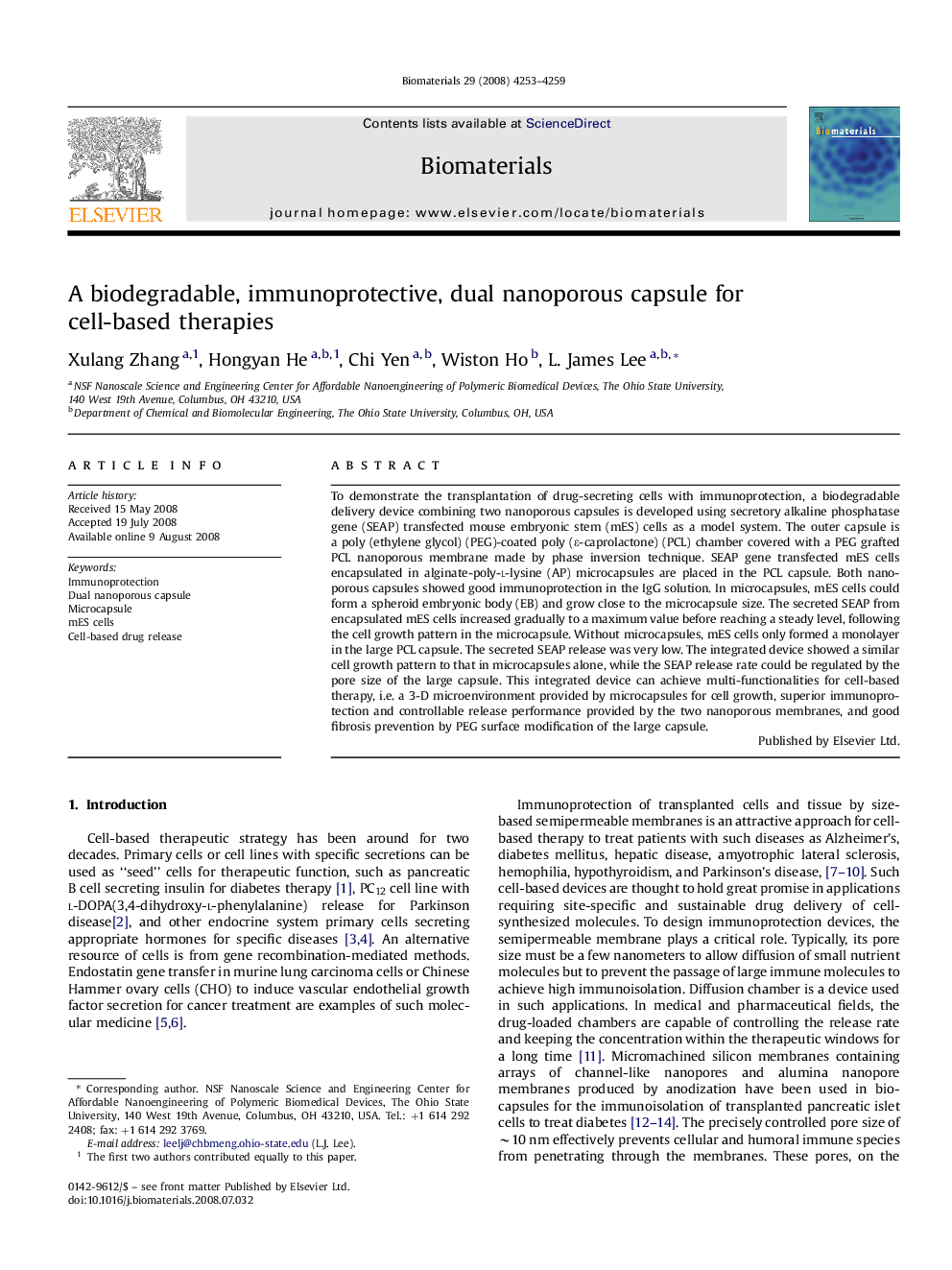| Article ID | Journal | Published Year | Pages | File Type |
|---|---|---|---|---|
| 9312 | Biomaterials | 2008 | 7 Pages |
To demonstrate the transplantation of drug-secreting cells with immunoprotection, a biodegradable delivery device combining two nanoporous capsules is developed using secretory alkaline phosphatase gene (SEAP) transfected mouse embryonic stem (mES) cells as a model system. The outer capsule is a poly (ethylene glycol) (PEG)-coated poly (ɛ-caprolactone) (PCL) chamber covered with a PEG grafted PCL nanoporous membrane made by phase inversion technique. SEAP gene transfected mES cells encapsulated in alginate-poly-l-lysine (AP) microcapsules are placed in the PCL capsule. Both nanoporous capsules showed good immunoprotection in the IgG solution. In microcapsules, mES cells could form a spheroid embryonic body (EB) and grow close to the microcapsule size. The secreted SEAP from encapsulated mES cells increased gradually to a maximum value before reaching a steady level, following the cell growth pattern in the microcapsule. Without microcapsules, mES cells only formed a monolayer in the large PCL capsule. The secreted SEAP release was very low. The integrated device showed a similar cell growth pattern to that in microcapsules alone, while the SEAP release rate could be regulated by the pore size of the large capsule. This integrated device can achieve multi-functionalities for cell-based therapy, i.e. a 3-D microenvironment provided by microcapsules for cell growth, superior immunoprotection and controllable release performance provided by the two nanoporous membranes, and good fibrosis prevention by PEG surface modification of the large capsule.
